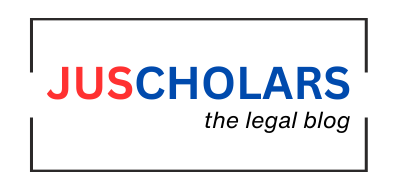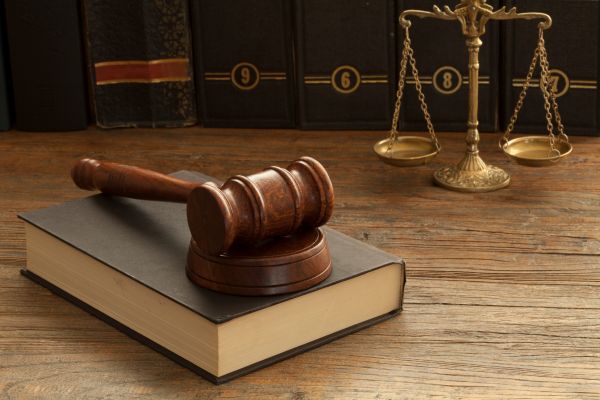As per World Intellectual Property Organization (WIPO), “a patent is an exclusive right granted for an invention, which is a product or a process that provides, in general, a new way of doing something, or offers a new technical solution to a problem”.[1]
A patent grants the holder the sole authority to forbid or obstruct others from financially exploiting the invention. In other words, patent protection prevents anyone from using, distributing, importing, or selling the innovation for profit without the patent owner’s permission. This right is granted by the government of India and is valid for 20 years following the date of publication.
However, this grant of the only right to use a patent is not unqualified; in certain instances, third persons may be permitted to utilise a patent by the issuance of a Compulsory license.
Compulsory licensing, in the context of Patent laws are granted by countries to deal with monopolies acquired in Intellectual Property Rights. The “compulsory license” is an authorization which permits the third party to use, make or sell an invention for which a patent has been granted, without the consent of the owner of the patent as opposed to the exclusive rights that are conferred on a patentee to use, make or sell a patented invention and prevent unauthorised and illegal use by third parties.
Compulsory license prevents the abuse and monopolization of a patent thereby, allowing the commercial exploitation of a patented invention by those interested in it. Under the Patents Act, 1970 the provisions concerning ‘compulsory licenses’ are prescribed under Chapter XVI. A compulsory license is granted by the Government and not by private entities or third parties.
However, the grant of compulsory license operates against the patent owner but compulsory licenses are generally considered in the field of pharmaceuticals to protect public health and health crisis and also in cases of national emergency.
For the grant of a compulsory license by the Government, certain essential conditions must be fulfilled. Section 84-92 of the Patents Act, 1970 prescribes the conditions which must be fulfilled and the Patents Rules, 2003, rules 96-102 incorporates compulsory licensing. It is crucial for the Controller to be convinced that a prima facie case exists before granting a compulsory license for a patent, sought by the applicant. [2]
Hence, compulsory licensing tries to eliminate misuse of patent rights by a patent holder in view of public health or anti-competitive practices which would result in restricting trade or hindering technology transfer.
What constitutes as misuse of patent rights?
Misuse of patent rights basically includes, let’s say for an example not working, that is, manufacturing the patented innovation in India and hence preventing the development of local trade and industry. Also misuse, includes imposing unreasonable terms for the licensee, forcing restrictive conditions on the use or sale of patented product even after the patent expires, price fixing or even declining grant of license by a patent holder to a third party seeking the licence to produce patented product in the particular market.[3]
Changes in compulsory licensing due to trips agreement
The TRIPS Agreement, a WTO protocol harmonising the minimum standards for IP protection across all WTO members, made it mandatory for its member nations to deal with patent failure because the TRIPS Agreement’s goal was to promote global competition and to develop a global patent regime. As a result, the TRIPS agreement includes a variety of measures addressing public order, morals, and health.
Furthermore, the TRIPS Agreement specifies the conditions under which a compulsory licence may be granted, such as earlier efforts to secure a licence from the patent owner, appropriate payment to the patent owner, and non-exclusive and non-assignable usage. Most importantly, TRIPS further states that such use must be granted for the supply of domestic market of the member[4] granting such compulsory license.
Effects of trips on compulsory licensing in India
Before the arrival of TRIPS Agreement here in India, Indian Patent Laws did not allow grant of Patents for any product, so new and innovative drugs could be launched without any patent protection. But after TRIPS came up, situation changed, products starting to get patenting. This gave more flexibility to the patentees with availability, quantity and price value of the drugs. As the result of this the Indian Patent Laws incorporated many comprehensive provisions for compulsory licensing to prevent misuse of patent rights.
Applying for grant of a compulsory license
Section 84 of the Indian Patent Act provides that an application to the controller for the grant of compulsory license can be made by any person, whoever interested to do so, including the license holder after the expiration period, which is of 3 years from the date of the grant of a patent, provided if following conditions are satisfied:
- Public’s reasonable requirements, if appeared to not have been satisfied with respect to patented invention. OR
- The patented invention or the product is not made available to the public at reasonable prices, i.e. it is out of reach of most of the people. OR
- The patented invention is not worked in the territory of India.
The Controller should take the following aspects into account while considering an application:
- the nature of the invention;
- the time which has elapsed since the sealing of the patent;
- the measures that are taken by the patentee or licensee to make full use of the invention;
- the ability of the applicant to work the invention to the public advantage;
- where the application is granted, the capacity of the applicant to undertake the risk in providing capital and working the invention;
- whether a licence has been obtained by the applicant from the patentee on reasonable terms and conditions and the efforts to obtain a licence has been made within a reasonable period, as the Controller may deem fit. The ‘reasonable period’ shall not exceed a period of 6 months.[5]
.
However, the Controller shall not take the aforementioned details of the application into account under the following situations:
- in case of national emergency; or
- in circumstances of extreme urgency; or
- in case of public non-commercial use; or
- on the adoption of anti-competitive practices by the patentee.
If the Central Government determines that it is necessary for compulsory licences to be granted at any time after the sealing thereof to use the invention, whether due to a “National emergency,” “Extreme urgency,” or “Public non-commercial use,” it may make a declaration to that effect by notification in the Official Gazette.
The Controller will then, upon request made at any time following notification by any interested party, award the applicant a licence under the terms and conditions he deems appropriate.[6]
Compulsory license for exporting patented pharmaceutical products
According to Section 92A of the Indian Patent Act, a compulsory licence shall be available for the manufacture and export of patented pharmaceutical products to any country with insufficient or no manufacturing capacity in the pharmaceutical sector for the concerned product to address public health problems, provided that such country has granted a compulsory licence or has permitted the importation of the patented pharmaceutical products from India.
Upon receipt of an application in the appropriate form, the Controller must award a compulsory license only for the manufacturing and export of the relevant pharmaceutical product to such nation under such terms and conditions as he may specify and publish.[7]
Revocation of non-working patents
Where a compulsory licence has been issued to a patent, the Central Government or any person interested may apply to the Controller for an order to revoke the patent after two years from the date of the issuance of the first compulsory licence. The application for revocation shall be based on one of the following grounds:[8]
- that the patented invention has not been worked on Indian territory; or
- that reasonable public requirements for the patented invention have not been met; or
- the patentable invention is not affordable to the general people.
An application to the Controller should clearly identify the facts on which the application is based, and if submitted by someone other than the Central Government, it should specify the nature of the applicant’s interest[9]. Furthermore, every application shall be decided within one year after its submission to the Controller. The Controller may issue an order cancelling the patent if he is persuaded that:
- the reasonable needs of the public regarding the patented invention have not been met; or
- the patented invention has not been worked on Indian territory; or
- that the patented innovation is not affordable to the general public[10]
Where, after considering the evidence the Controller is satisfied that a prima facie case is not present to make an order under Section 84 and 85, the applicant should be notified accordingly and the Controller should refuse the application within one month from the date of such notification. However, the applicant can request for a hearing and based on the hearing the Controller can decide whether to proceed with the application or refuse it[11]
Powers of the controller
Section 86 of the act states that in certain cases, the Controller has the power for adjourning the applications made under sections 84 and 85 of the act on the grounds that:
- that the patented invention has not been used in the territory of India; OR
- that the patented invention is not being used on a commercial scale in the territory of India to the fullest practicable extent and the Controller is satisfied that not enough time has passed since the patent’s sealing date to allow the invention to be used on a commercial scale in the territory of India to the fullest practicable extent.
Once the Controller is certain that the patentee has taken fast, sufficient, and reasonable procedures to start the working of the invention on a commercial scale and to an adequate extent can he order an adjournment.
Section 88 of the Patents Act confers certain powers on the Controller in granting compulsory licences, which are as follows:
- Where the manufacture, use, or sale of materials not protected by the patent is prejudiced due to the conditions imposed by the patentee on the grant of licences under the patent, or the purchase, hire, or use of the patented article or process, the Controller, if satisfied, can order the grant of licences under the patent to the applicant or to customers of the applicant;
- When an application is made under, the controller may terminate an existing licence or, instead of granting a licence to the applicant, he may order the amendment of the existing licence.
- When the same patentee holds two or more patents and an applicant for a compulsory licence establishes that the reasonable requirements of the public have not been met with respect to some of the patents, if the Controller is satisfied that the applicant is unable to efficiently or satisfactorily work the licence granted to him under the patents without infringing the patentee’s other patents, and if the patents involve technical advancement or are of an economic nature in relation to the other patents, the Controller by order may direct the grant of a licence in respect of the other patents to enable the licensee to work the patents with respect to which a patent is granted under section 84;
- Where the Controller settles the terms and conditions of a licence, the licensee can make an application to the Controller to revise the terms and conditions after working the invention on a commercial scale for at least 12 months on the pretext that the terms and conditions that were settled have proven to be more onerous than what was expected initially, causing the licensee to be unable to work the invention and incurring losses. [12]
Procedure for dealing with applications under section 84 and 85
The method for dealing with applications under Sections 84 and 85 is outlined in Section 87 of the Act. When an application is filed under section 84 or 85, and the Controller determines that there is a prima facie case to issue an order, the applicant is directed to provide copies of the application to the patentee and any other person interested in the patent, and the application is published in the official journal.
The patentee or any other person may present a notice of objection to the application to the Controller within a statutory time limit or within such time as the Controller may allow.
The notice of opposition must be delivered to the Controller within two months of the application’s publication date[13]. The terms and circumstances of the licence that the opponent is willing to offer to the applicant, as well as the evidence in support of the objection, should be mentioned in the notice of opposition.
The grounds for opposing an application must be stated in the notice of opposition. Furthermore, the opponent must provide a copy of the objection notice and documentation to the applicant and notify the Controller. Any further statement or proof can be made only with the Controller’s permission or on the Controller’s requisition. The Controller shall set a day and time for the hearing of the case and provide the parties with at least 10 days’ notice of such hearing[14]
Terms and conditions of compulsory licences[15]
The Controller while settling the terms and conditions of a licence under section 84 should seek to secure the following :
- the royalty and remuneration for the patentee or other person entitled to benefit from the patent are reasonable;
- the person to whom the license is granted is to work the patented invention to the greatest extent possible and at a reasonable profit; and • the public has access to the patented articles at reasonable prices
- a non-exclusive license is granted;
- the licensee’s right is non-assignable;
- the license is granted for the remainder of the patent’s term; • the license is granted for supply in the Indian market, and the licensee may export the patented product if necessary;
- the license granted in the case of semiconductor technology is to work the invention for public non-commercial use;
- Where the license is issued to address an anti-competitive practice, the licensee may export the patented goods if necessary.
However, the grant of license does not permit a licensee to import from abroad patented items or products created by a patented method, when importing such articles or substances would constitute an infringement of the patentee’s rights unless authorised.[16]
First case in india on granting compulsory license
Since the enactment of the Indian Patent Laws, the application of rules regarding compulsory licensing has remained low and of a very exceptional nature. In 2012, Natco Pharma was granted the first ever compulsory license in India for the manufacture of a generic form of Bayer’s Nexavar, a drug for liver and kidney cancer. The grounds for granting compulsory licence were that the drug was not manufactured in India, and was sold for 3200 EUR for a monthly treatment which made it unavailable to the public for a reasonable price. The compulsory licence granted to Natco assured that the generic version of Nexavar would be sold for 100 EUR per month[17].
It is worth mentioning that royalties paid quarterly by Natco Pharma to Bayer are at the rate of 6% of all sales[18], which is in accordance with the guidelines set by the United Nations Development Programme (UNDP)[19]
Moreover, in 2013 BDR Pharmaceuticals International Pvt Ltd[20] filed for a compulsory licence for a cancer drug SPRYCEL manufactured by Bristol Myers Squibb and in 2015 Lee Pharma[21] filed for a compulsory licence of a diabetes management drug Saxagliptin manufactured by AstraZeneca. Both applications were rejected by the Indian Patent Office as neither BDR Pharmaceuticals International Pvt Ltd nor Lee Pharma sufficiently justified reasons for such grant. In case of BDR Pharmaceuticals International Pvt Ltd , the Indian Patent Office argued that the applicants for compulsory licence did not make a sufficient attempt to obtain a licence from the patent holder and did not have a capacity to adequately manufacture the invention to meet public needs. On the other hand, Lee Pharma failed to demonstrate how the public would benefit from generic version of the drug in view of already available drugs in the market in the same price range.
Conclusion
The granting of mandatory drug licences has played a critical role in the healthcare system. However, a mandatory licence can have an influence on innovation by making pharmaceutical businesses more reliant on generic pharmaceuticals and limiting their ability to innovate. The requirement to invest and carry out R&D will be hampered because they will rely only on obtaining a compulsory licencing to a generic drug. Ordinary people’s affordability is a critical concern in developing and undeveloped countries. As a result, granting a compulsory licencing can operate as a facilitator in regulating medicine costs. It will also ensure adequate supplies to those in genuine need.
Compulsory licences have also encouraged countries to help each other and brought them on a single platform, globally. Although compulsory licences revoke a patentee’s exclusive rights to his patented innovation, they also serve an important role in limiting and defending against IPR monopolies. Patents cannot exist without innovation. As a result, the granting of obligatory licences should not come at the expense of impeding innovation, research, and development, which are critical for a country’s overall evolution and advancement.
Author: This article has been written by Aishna Sikri, a student at Dr. B.R Ambedkar National Law University, Sonepat.
[1] Patents rights ,available at: https://www.wipo.int/patents/en/%23:~:text=A%20patent%20is%20an%20exclusive,public%20in%20a%20patent%20application.( last visited on 24th May;2023)
[2] Compulsory Licenses under the Patents Act, available at: https://lawcirca.com/compulsory-licenses-under-the-patents-act/ (last visited on 24th May;2023)
[3] Compulsory Licensing in India and changes brought to it by the TRIPS Agreement, available at:https://intellectual-property-helpdesk.ec.europa.eu/news-events/news/compulsory-licensing-india-and-changes-brought-it-trips-agreement-2021-10-12_en(last visited on 24th May;2023)
[4] FACT SHEET: TRIPS AND PHARMACEUTICAL PATENTS, available at : https://www.wto.org/english/tratop_e/trips_e/factsheet_pharm02_e.htm( last visited on 24th May;2023)
[5] The Patents Act, 1970 (Act 39 of 1970), S. 84(6).
[6] Dr. Sujit Kumar. “Compulsory Licensing of Patents.” YouTube, uploaded by Dr. Sujit Kumar, 15 Oct. 2022,available at: https://www.youtube.com/watch?v=Lu2omeeXaDI&t=537s (last watched on May 25, 2023)
[7] COMPULSORY LICENSING OF PATENTS IN INDIA, available at:
https://www.jainandpartners.com/blog/details/compulsory-licensing-of-patents-in-india/37( last visited on 24th May;2023)
[8] The Patents Act, 1970 (Act 39 of 1970), s. 85 (1).
[9] The Patents Act, 1970 (Act 39 of 1970), s. 85 (2).
[10] The Patents Act, 1970 (Act 39 of 1970), s. 85 (3).
[11] The Patents Rules, 2003, Rule 97 (1) & (2).
[12] The Patents Act, 1970 (Act 39 of 1970), s. 88
[13] The Patents Rules, 2003, Rule 98 (1).
[14] The Patents Act, 1970 (Act 39 of 1970), s. 87 (3).
[15] The Patents Act, 1970 (Act 39 of 1970), s. 90 (1).
[16] The Patents Act, 1970 (Act 39 of 1970), s. 90 (2).
[17] Dealing with compulsory licensing in India, available at: https://www.worldtrademarkreview.com/regionindustry-guide/india-managing-the-ip-lifecycle/2020/article/dealing-compulsory-licensing-in-india (last visited on 25th May;2023)
[18] Natco Pharma wins cancer drug case, available at: https://www.thehindu.com/business/companies/natco-pharma-wins-cancer-drug-case/article4475762.ece ( last visited on 25th May; 2023)
[19] Worldwide: Fair Remuneration For Compulsory Licensing, available at: https://www.mondaq.com/india/patent/616430/fair-remuneration-for-compulsory-licensing ( last visited on 25th May; 2023)
[20] BDR Pharmaceuticals International Pvt. Ltd v. Bristol Myers Squibb Company, (2021) 1 ILR 100
[21] Lee Pharma v. AstraZeneca, (2022) 2 ILR 200.






